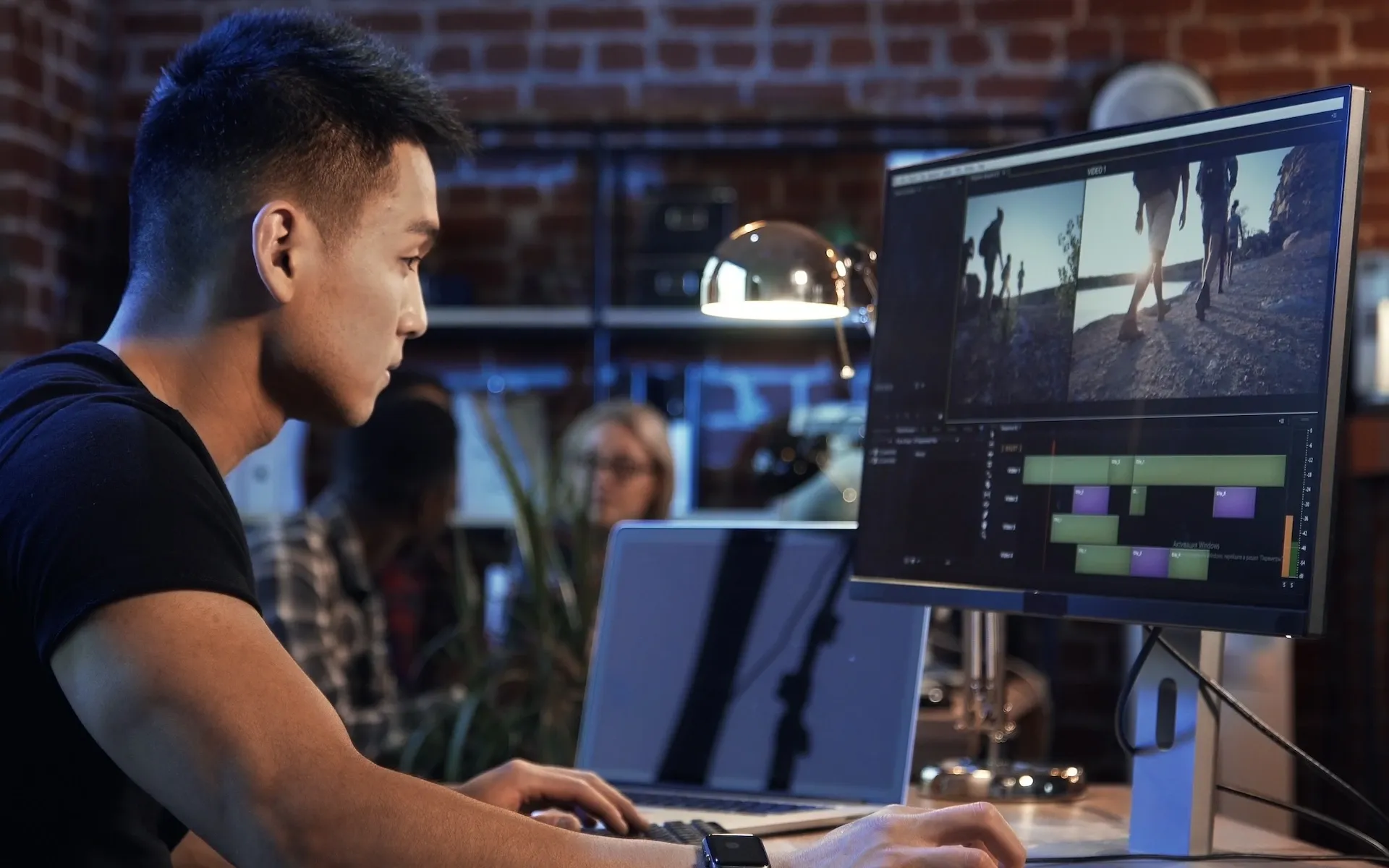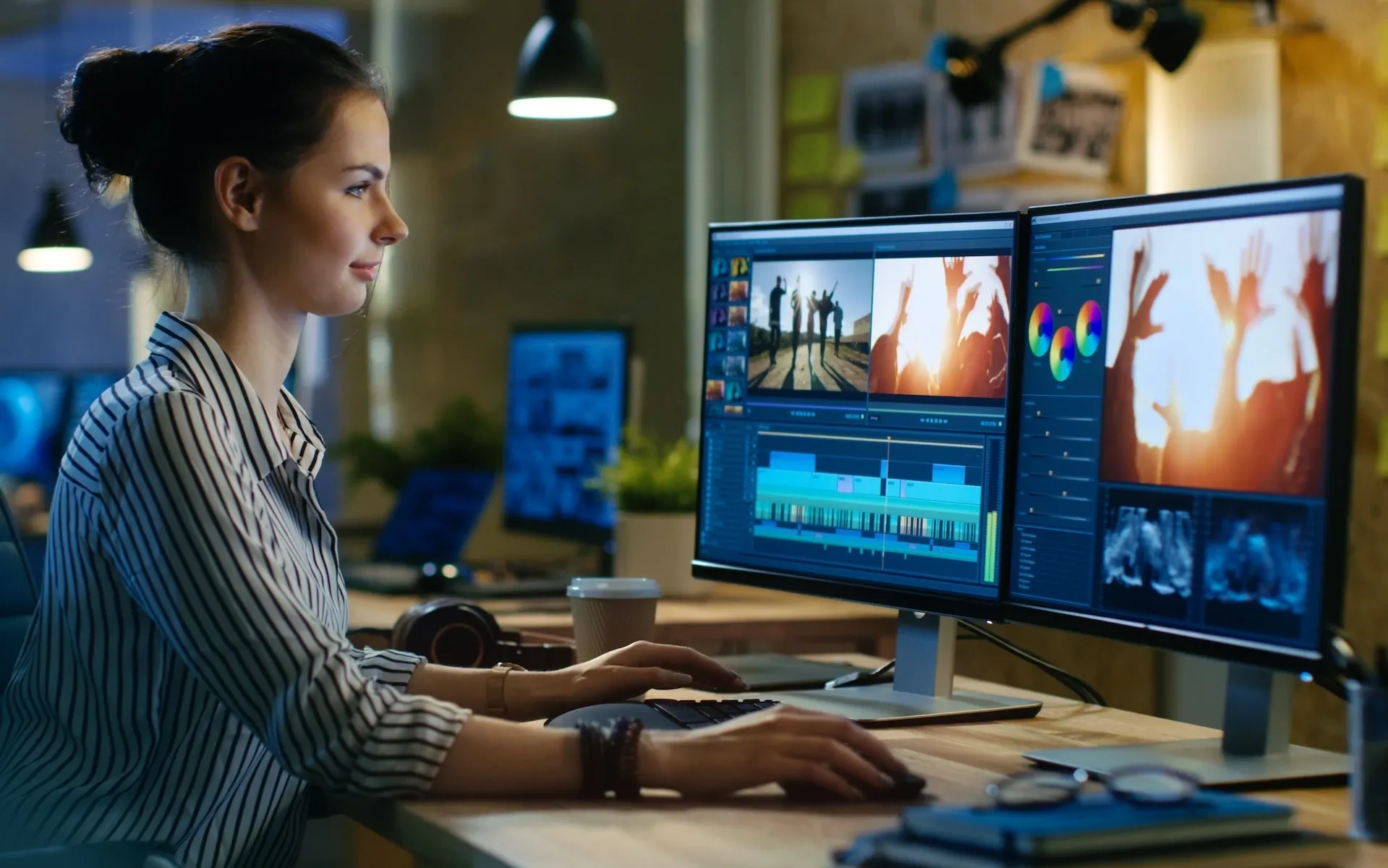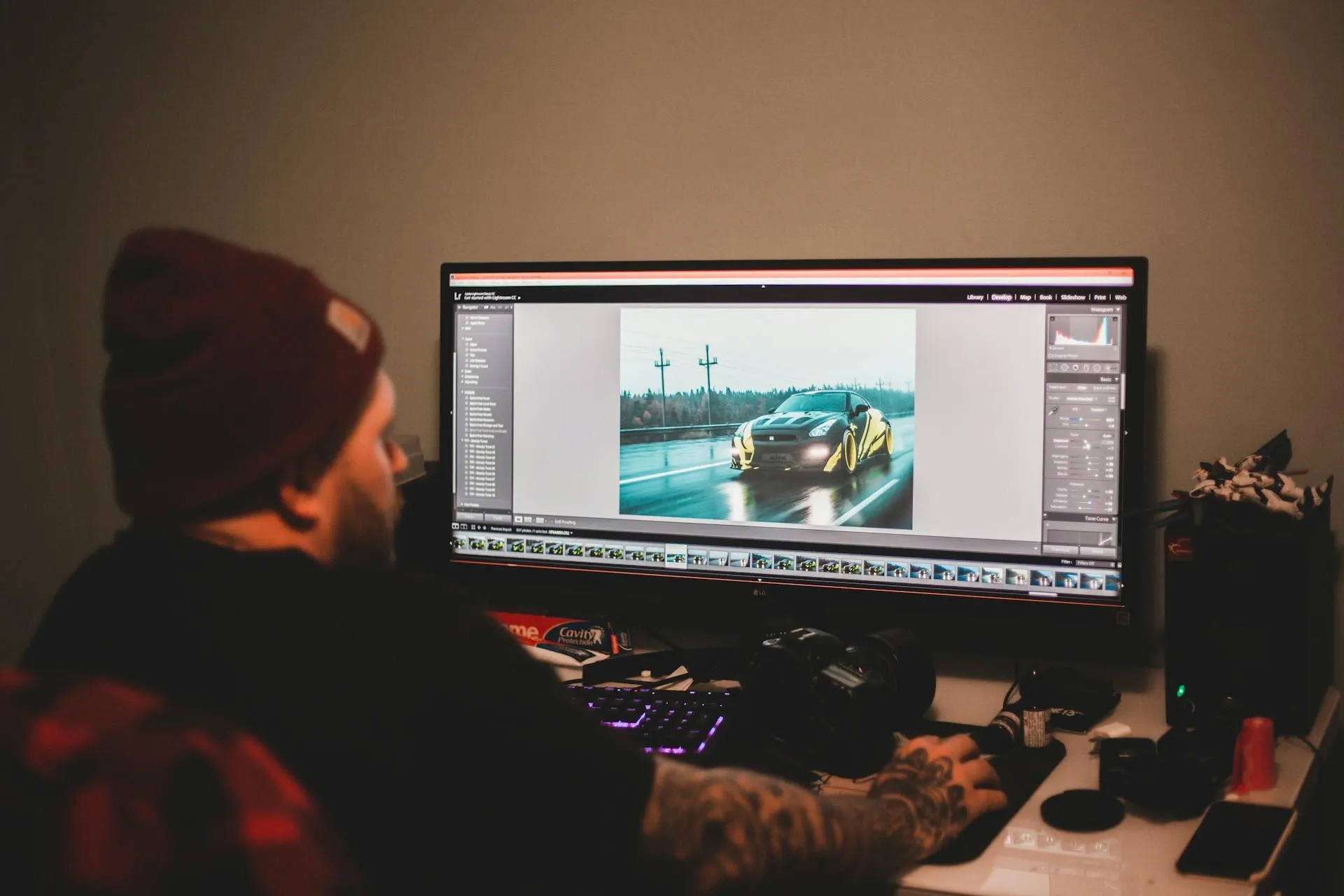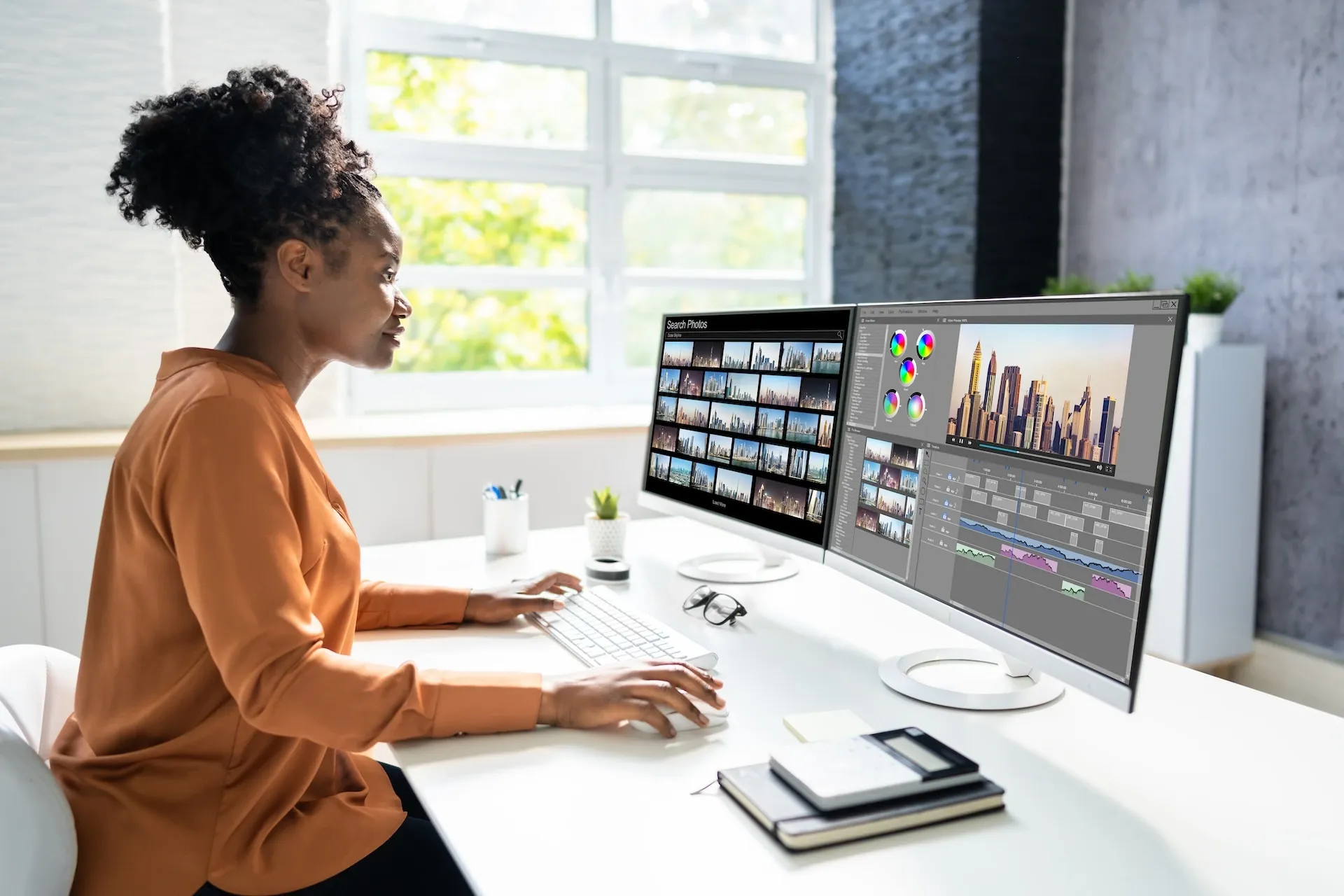What is parallel editing and should you use it in your content?
Parallel editing is a video editing technique used to establish time, place, and atmosphere. Let's take a look at parallel editing definitions, examples, and more.

Want to use parallel editing in your content? Discover what it is, how to use it, the best-in-class examples, and more.
Today, we’ll cover:
- What is the definition of parallel editing?
- What are the benefits of parallel editing?
- What’s the difference between parallel editing and cross-cutting?
- What’s the difference between parallel editing and split-screen?
- What should you avoid when parallel editing?
- What are the best examples of parallel editing?
What is the definition of parallel editing?
Parallel editing is a post-production technique, in which two or more different scenes are intercut to suggest they’re happening at the same time. A common example is two people talking on the phone, the camera cutting between them both.
If you’re working on a large-scale set with multiple subjects — something like a battle or chase scene — then parallel editing can flit between two different things happening in that scene.

What are the benefits of parallel editing?
Parallel editing fleshes out your scenes and injects them with life. It can draw comparisons, create suspense, and lend your content a narrative flair you might not achieve with regular continuity editing. Let’s take a look at why you’d use parallel editing.
To lay down a narrative
Parallel editing links storylines together. By nature, an audience will associate a scene with what came immediately before or after, unless they’re told otherwise. Tying your narrative together with parallel editing can help you avoid spelling things out for your audience, letting them put the pieces together themselves.
To build tension
Jumping in and out of different viewpoints can build tension and give viewers a fuller picture. Parallel editing can also introduce dramatic irony, letting the audience know crucial details that some of your subjects might not.

To establish scale
If you’re trying to suggest an event has a large impact, parallel editing can suggest scale. If people all over the world are experiencing or seeing a thing, it may convey your point more robustly than focusing on one location.
To pace your footage
You can use parallel editing to slow things down, but it’s also perfect for pushing pulses into overdrive. Hopping between scenes can feel frantic and fast-paced — if that’s the vibe you’re going for, parallel editing can tighten your grip on an audience’s attention. It’s energetic, exciting, now.
To compare and contrast
Parallel editing can juxtapose two scenes and the themes contained within. Good and evil, fast and slow, cities and towns — a well-delivered parallel video edit can expose the gulf between multiple scenes.

What’s the difference between parallel editing and cross-cutting?
Cross-cutting and parallel editing are often used to describe the same thing, but there’s a subtle difference. As we’ve mentioned, parallel editing depicts scenes happening at the same time, even if they’re in different locations.
However, cross-cutting is a broader umbrella term, intercutting scenes regardless of whether they’re happening at the same time or not. Montages, flashbacks, dream sequences, and parallel editing can all be classed as cross-cutting. This means that all parallel editing is a form of cross-cutting, but not all cross-cutting is parallel editing.

What’s the difference between parallel editing and split-screen?
Parallel editing jumps between two scenes, while split-screen literally splits the screen. The footage in split-screen content can happen at the same time, or it can smash different periods together.
One of the most famous examples of split-screen editing is Brian De Palma’s adaptation of Carrie, but if you’re looking for something a little less bloody, check out Edgar Wright’s Scott Pilgrim vs. the World. The below split-screen is stylized, introducing two characters and aping the comic book style upon which the movie’s based. Plus, it just looks cool.
What should you avoid when parallel editing?
Parallel editing is popular, but it isn’t a free pass to cut here, there, and everywhere. As a guideline, assemble your two sequences independently, and see if they work. If they don’t make sense on their own, viewers may struggle to understand them once you mash them together.
It’s worth remembering your continuity editing rulebook, too. Things like jump cuts, lines of sight, the 180-degree rule, and more all count during parallel editing — it’s still got to look good, even when you’re mixing things up in the post-production process.

What are the best examples of parallel editing?
Now that you’ve learned the definition of parallel editing, its benefits, and how it differs from similar techniques, let’s wrap up with some of our favorite parallel editing examples.
Le cheval emballé – 1908
Louis J. Gasnier’s early slapstick short demonstrates how parallel editing can strengthen your plot. The laundry worker parks his horse by the road and goes into a house — meanwhile, said naughty horse eats a whole bag of oats. The parallel edit flops between these scenarios, and by the time the man’s left the house, his horse is on an oat-fueled rampage.
Strangers On a Train – 1951
Alfred Hitchcock’s noir classic opens with one of the slickest parallel edits in cinema. Through the opening scene, we see one character’s feet walk down the train’s aisle, then sit down.
The next shot shows another character’s feet coming from the opposite direction, heading to the opposite seat. The third shot shows both characters sitting opposite one another, establishing them as the titular strangers on a train.
The Dark Knight – 2008
Christopher Nolan’s a master of parallel editing — some might argue his best examples can be found in Oppenheimer or Inception, but this sequence from The Dark Knight is an underrated gem.
Batman has to choose between saving two people, and based on the frantic parallel editing, the audience is tricked into believing one person will be rescued over another. No, you’re crying.
So, we’ve gone through the basics — now it’s time to nail your parallel editing and create great content. And if you need music to strengthen your footage, don't settle for second-best. After all, bad music kills good video.
Our catalog is high-quality, affordable, and safe. An Epidemic Sound subscription goes beyond royalty-free music, removing the headache of licensing and freeing you up to do what you do best. You can enjoy the safety of our license hand-in-hand with our massive catalog of 50,000 tracks, covering just about every genre you can think of. You’ll also gain unlimited access to our advanced search functions — finding the right sound’s never been easier.
It’s better than royalty-free. It’s worry-free. Get started with Epidemic Sound below.

Are you a filmmaker? We've got you covered with background music for videos, including:
Take your video editing to the next level with our massive catalog of music for filmmakers.

